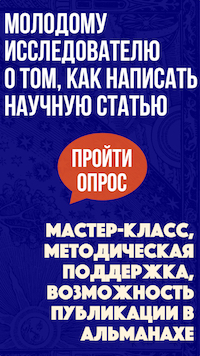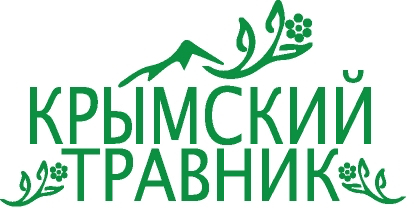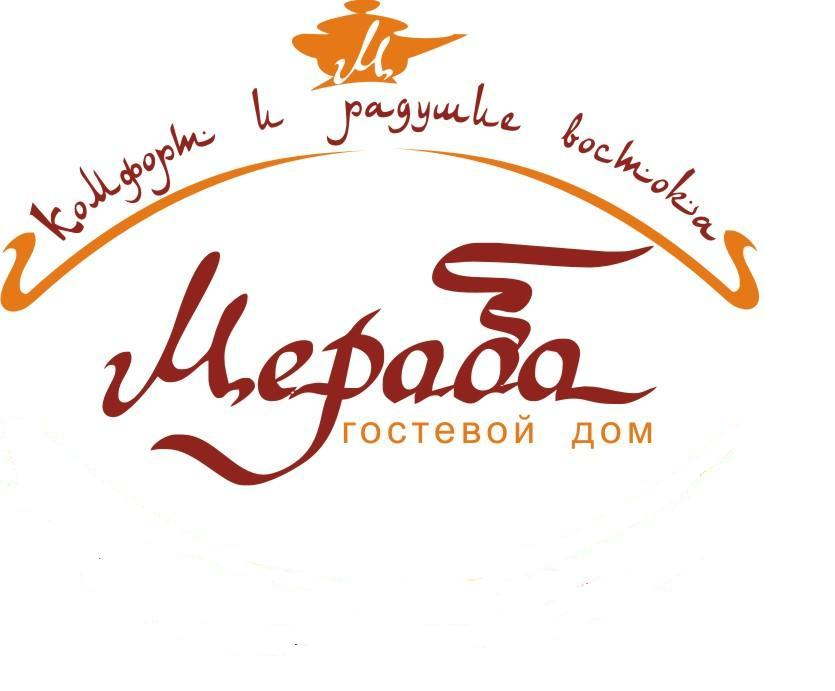МОЛОДЁЖНЫЙ ПРОЕКТ ДЛЯ ТЕХ, КТО ДЕЛАЕТ ПЕРВЫЕ ШАГИ В НАУКЕ
/components/bitrix/system.auth.form/auth_alm/images/login.gif) Войти
Войти /components/bitrix/system.auth.form/auth_alm/images/register.gif) Регистрация
Регистрация
Войти в корпоративную почту как автор/член редколлегии/рецензент журнала
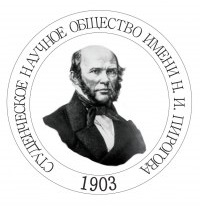


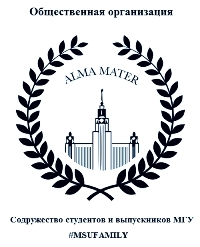
2016. Том 12. Выпуск 2.
Романов А.А.
Краткий очерк истории расквартирования и обустройства пограничной стражи Российского государства (862—1917 гг.)
Романов Александр Александрович, кандидат военных наук, профессор, эксперт Фонда национальной и международной безопасности, заслуженный работник высшей школы Российской Федерации,действительный член Международной академии информатизации, полковник в отставке
E-mail: alexander-a-romanov@j-spacetime.com
В статье обсуждается опыт расквартирования и обустройства пограничной стражи Российского государства, начиная с самых ранних этапов его существования. Представлен анализ эволюции подходов к созданию необходимых условий для обеспечения служебной деятельности, жизни и быта порубежной стражи при организации охраны и защиты границы, позитивные и негативные решения объективного и субъективного характера в сфере социального обустройства и расходов государственной казны.
Ключевые слова: порубежные (пограничные) формирования; дислокация; расквартирование порубежного (пограничного) формирования; пограничный пост; таможенный пост; обустройство пограничного формирования; расходы на обустройство границы.
Цитирование по ГОСТ Р 7.0.11—2011:
Романов, А. А. Краткий очерк истории расквартирования и обустройства пограничной стражи Российского государства (862—1917 гг.) [Электронный ресурс] / А.А. Романов // Электронное научное издание Альманах Пространство и Время. — 2016. — Т. 12. — Вып. 2. — Стационарный сетевой адрес: 2227-9490e-aprovr_e-ast12-2.2016.53.
Romanov A.A.
A Short History of Billeting and Fitting Out of Border Guards of the Russian State (862—1917)
Alexander A. Romanov, Sc.D. (Military Science), M.Hist., Professor, expert at the Foundation for National and International Security (Moscow), Honored Worker of Higher School of the Russian Federation, Member of the International Informatization Academy, retired colonel
E-mail: alexander-a-romanov@j-spacetime.com
The new geopolitical and economic realities demanded a fundamentally new approach to the strengthening of the Russian State border. In this regard, interest is how throughout history Russian authorities solved problems of arrangement of border guard units, as well as spending from the state treasury to create conditions for Border Guard Service and everyday life of border guards themselves. This interest has also caused certain eurhythmics (repetitiveness, perhaps even cyclicality) of political processes, and, therewith, the formation and dynamics of the state border and its protection force, and therefore the repetitiveness of trends and approaches to ensuring appropriate conditions of service and life of border guards.
In my article, based on a critical analysis of the historiographical sources within the framework of historical and genetic approach, I represent a brief overview of the main stages of becoming and development of the Russian Border Guard Service organization as regards its socio-economic provision.
I traced evolution of Border Guard Service arrangement from its maintenance exclusively through the efforts of the local population of the border regions (9th—15th cc.) to the state machinery’s incurring of all financial and administrative burden on border infrastructure arrangement (early 16th — late 19th cc.). With increasing length of the border, the main problem has been the increase the cost of placement of border and customs posts and quartering of border guards and customs. In many regions, exacerbating the problem was that difficult climatic and geographical conditions were unfit both for official duty performances and even for living.
In the 19th century, there were two approaches that took shape regarding the matter of border guards’ billeting. The basis of the first approach was an idealized vision of maximum possible comfort of border guards’ dwelling, regardless of local conditions. According to the second one, such habitation must be capable of meeting requirements of minimal comfort just enough to provides the course of duty. In late 19th c., both approaches have been tried in the conditions of the Black Sea coast. This testing has proven effectiveness (not only economical) of the second approach, because it was focused on the use of those types of local dwellings, which for centuries allowed adapting to local natural conditions. Also for mass building of the border guards’ barracks, materials allowing quickly producing construction work (first of all, concrete) were used.
In the last decade of the 19th century, it has become apparent that it is necessary, on the one hand, to create maximally favorable living conditions for border guards, on the other hand, to equip posts (cordons) such a manner that they could have been minimally burdensome for the state treasury. For this reason, in the last decades of the 19th century, the practice of partial arrangement of the border (construction of border and customs posts) by efforts of personnel of the border operation units (the so-called construction without contractors) was revived, with yielding up to 30—35% savings over contracting prices. This practice was profitable for state treasury, and it lasted until the early 21 century.
I conclude that nowadays, it is advisable to turn to the experience of the late 19th century: do not build on the border ‘palaces’ which cost 120—160 million rubles, but look for more modern ways of construction of military camps, for example, mobile modular unit construction of divisions (frontier outposts) and departments (border commandant's headquarters). Thus it would be possible to reduce significantly the cost and timing of their construction without degrading accommodation comfort of border guards and their families.
Keywords: border units; dislocation; billeting of border unit; border post; customs post; arrangement of border unit; expenditure on arrangement of the border.
Cite MLA 7:
Romanov, A. A. "A Short History of Billeting and Fitting Out of Border Guards of the Russian State (862—1917)." Electronic Scientific Edition Almanac Space and Time 12.2(2016). Web. <2227-9490e-aprovr_e-ast12-2.2016.53>. (In Russian).
Список литературы / References
Литература
Артёмов В.В. Дом Романовых: Научно-популярное издание. М.: Олма Медиа Групп. 448 с.
Беляева Т. Зелёные стены России // Наука и жизнь. 2004. № 5. С. 20—25.
Боярский В.И. На стражи Руси стояти. Страницы истории пограничной стражи Российского государства. М.: Граница, 1992. 168 с.
Валишевский К. Иван Грозный. М., 1912 г. 428 с.
Вещиков П.И. Военное хозяйство — Тыл Вооруженных Сил России (XVIII—ХХ вв.). М.: Издательский дом «На пресс», 2003. 458 с.
Владимирский Б.М. Космическая погода и социокультурная динамика [Электронный ресурс] // Электронное научное издание Альманах Пространство и Время. 2012. Т. 1. Вып. 2. Режим доступа: http://e-almanac.space-time.ru/assets/files/Tom1Vip2/rubr8-chelovek-i-sreda-obitaniya-st2-vladimirskij-2012.pdf.
Вслед за Крымом. Имеет ли право Россия вернуть Аляску? [Электронный ресурс] // Еженедельник «Аргументы и Факты». 2014. 3 дек. № 49. Режим доступа: http://www.aif.ru/politics/world/vsled_za_ krymom_imeet_li_pravo_rossiya_vernut_alyasku.
Граница России: Иллюстрированный фотоальбом/Ред. В.Е. Проничев. М.: Граница, 2008. 272 с.
Ежуков Е.Л. Становление и развитие пограничной охраны России (XV — начало XX вв.): Научно–практическое пособие. М.: Всесоюзный институт повышения квалификации офицерского состава Пограничных войск КГБ СССР, 1991. 264 с.
Карамзин Н.М. История государства Российского. М.: Эксмо, 2003. 1024 с.
Клименко Б.М., Порк А.А. Территория и границы СССР. М.: Международные отношения, 1985. 304 с.
Костомаров Н.И. Русская история в жизнеописаниях её главнейших деятелей. М.: Эксмо, 2006. 1024 с.
Косточкин В.В. Крепость Ивангород. Крепостные сооружения древней Руси // Материалы и исследования по археологии СССР. 1952. Т. 2. № 31. С. 224—317.
Крадин Н.П. Русское деревянное оборонное зодчество. М.: Стройиздат, 1988. 142 с.
Лаппо Г.М. География городов. М.: Владос, 1997. 480 с.
Муратова С.Р. На страже рубежей Сибири // Национальные культуры региона. Научно-методический и репертуарно-информационный альманах. Тюмень, 2007. С. 32—46.
На страже границ Отечества / Под общ. ред. В.Е. Проничева. М.: Граница, 2012. 276 с.
Пограничная служба России: Энциклопедия. М.: Военная книга; Куликово поле, 2009. 624 с.
Раппопорт П.А. Древние русские крепости. М.: Наука, 1965. 87 с. [Электронный ресурс] // E-Libra.Ru: Электронная библиотека. Режим доступа: http://e-libra.ru/read/349512-drevnie-russkie-kreposti.html.
Раппопорт П.А. Очерки по истории русского военного зодчества Х—XIII вв. М. — Л.: АН СССР, 1956. 184 с. (Материалы и исследования по археологии СССР 1956. № 52. Т. 5: Материалы и исследования по археологии Древнерусских городов).
Чернушевич М.П. Материалы к истории пограничной стражи. Ч. I: Служба в мирное время. Стычки с контрабандистами и прочие происшествия на границе. Вып. III: В царствование императора Александра III (1881–1894 гг.). СПб., 1903. 100 с.
Чижевский А.Л. Земное эхо солнечных бурь. М.: Мысль, 1973. 352 с.
Шапиров Б.М. Санитарный отчет по Отдельному корпусу пограничной стражи за 1897 год.. СПб., 1898. 168, 64, III с.
Alanen A., Eskelinen H. "Economic Gap at the Finnish-Russian Border." Tearing Down the Curtain, Opening the Gates. Northern Boundaries in Change. Eds. P. Ahponen and P. Jukarainen. Jyväskylä: SoPhi, 2000, pp. 55—68.
Stoddard E.R. "Frontiers, Borders and Border Segmentation: Toward a Conceptual Clarification." Journal of Borderlands Studies 6.1 (1991): 1—22.
Wallinger M. The Russian Linesman: Frontiers, Borders and Thresholds. London: Hayward Publishing, 2009. 143 p.
References:
Alanen A., Eskelinen H. "Economic Gap at the Finnish-Russian Border." Tearing Down the Curtain, Opening the Gates. Northern Boundaries in Change. Eds. P. Ahponen and P. Jukarainen. Jyväskylä: SoPhi, 2000, pp. 55—68.
Artemov V.V. House of Romanovs. Moscow: Olma Media Group Publisher. 448 p. (In Russian).
Belyaeva T. "Green Walls of Russia." Nauka i Zhizn [Science and Life] 5 2004: 20—25. (In Russian).
Boyarsky V.I. To Stand on Guard of Russia: Pages of History of the Russian State Border Guard. Moscow: Granitsa Publisher, 1992. 168 p. (In Russian).
Chernushevich M.P. Materials for the History of Border Guard. Part I: The Service in Peacetime. The Clashes with Smugglers and Other Incidents on the Border. Volume III: In the Reign of Emperor Alexander III (1881—1894). St. Petersburg, 1903. 100 p. (In Russian).
Chizhevsky A.L. Terrestrial Echo of Solar Storms. Moscow: Mysl Publisher, 1973. 352 p. (In Russian).
Encyclopedia of Border Guard Service of Russia. Moscow: Voennaya kniga Publisher; Kulikovo Pole Publisher, 2009. 624 p. (In Russian).
Ezhukov E.L. Formation and development of the Russian Border Guard (15th — Early 20th cc.). Moscow: All-Union Institute for Advanced Training of Officers of the USSR KGB Border Guard Troops Publisher, 1991. 264 p. (In Russian).
"Following the Crimea. Does Russia Have Right To Return Alaska?." Arguments and Facts Weekly [Moscow] 3 Dec. 2014. Web. <http://www.aif.ru/politics/world/vsled_za_krymom_imeet_li_pravo_rossiya_vernut_alyasku>. (In Russian).
Karamzin N.M. History of the Russian State. Moscow: Eksmo Publisher, 2003. 1024 p. (In Russian).
Klimenko B.M., Pork A.A. Territory and Borders of the USSR. Moscow: Mezhdunarodnye otnosheniya Publisher, 1985. 304 p. (In Russian).
Kostochkin V.V. "Ivangorod Fortress. Fortress Buildings of Ancient Rus." Materials and Researches on the Archaeology of the USSR 31.2 (1952): 224—317. (In Russian).
Kostomarov N.I. Russian History in Lives of Its Principal Figures. Moscow: Eksmo Publisher, 2006. 1024 p. (In Russian).
Kradin N.P. Russian Wooden Defense Architecture. Moscow: Stroyizdat Publisher, 1988. 142 p. (In Russian).
Lappo G.M. Geography of Cities. Moscow: VLADOS Publisher, 1997. 480 p. (In Russian).
Muratova S.R. "Guarding the Borders of Siberia." National Culture of the Region. Scientific and Methodical Repertoire and Information Almanac. Tyumen, 2007, pp. 32—46. (In Russian).
Pronichev V.E., ed. Illustrated Album Border of Russia. Moscow: Granitsa Publisher, 2008. 272 p. (In Russian).
Pronichev VE., ed. Guarding the Borders of the Fatherland. Moscow: Boundary Publisher, 2012. 276 p. (In Russian).
Rappoport P.A. Ancient Russian Fortress. Moscow: Nauka Publisher, 1965. 87 p. E-Libra.Ru: Digital Library. N.p., n.d. Web. <http://e-libra.ru/read/349512-drevnie-russkie-kreposti.html>. (In Russian).
Rappoport P.A. Essays on the History of Russian Military Architecture of 10th—13th cc. Moscow and Leningrad: USSR Academy of Science Publisher, 1956. 184 p. (In Russian).
Shapiro B.M. 1897 Sanitary Report on a Special Corps of Border Guards. St. Petersburg, 1898. 168, 64, III p. (In Russian).
Stoddard E.R. "Frontiers, Borders and Border Segmentation: Toward a Conceptual Clarification." Journal of Borderlands Studies 6.1 (1991): 1—22.
Valishevsky K. Ivan the Terrible. Moscow, 1912. 428 p. (In Russian).
Veshchikov P.I. War Economy — Logistic Services of the Armed Forces (18th—20th cc.). Moscow: Na Press Publisher, 2003. 458 p. (In Russian).
Vladimirsky B.M. "Space Weather and Sociocultural Dynamics." Electronic Scientific Edition Almanac Space and Time 1.2 (2012). Web. <http://e-almanac.space-time.ru/assets/files/Tom1Vip2/rubr8-chelovek-i-sreda-obitaniya-st2-vladimirskij-2012.pdf>. (In Russian).
Wallinger M. The Russian Linesman: Frontiers, Borders and Thresholds. London: Hayward Publishing, 2009. 143 p.
Читать статью / Read more




